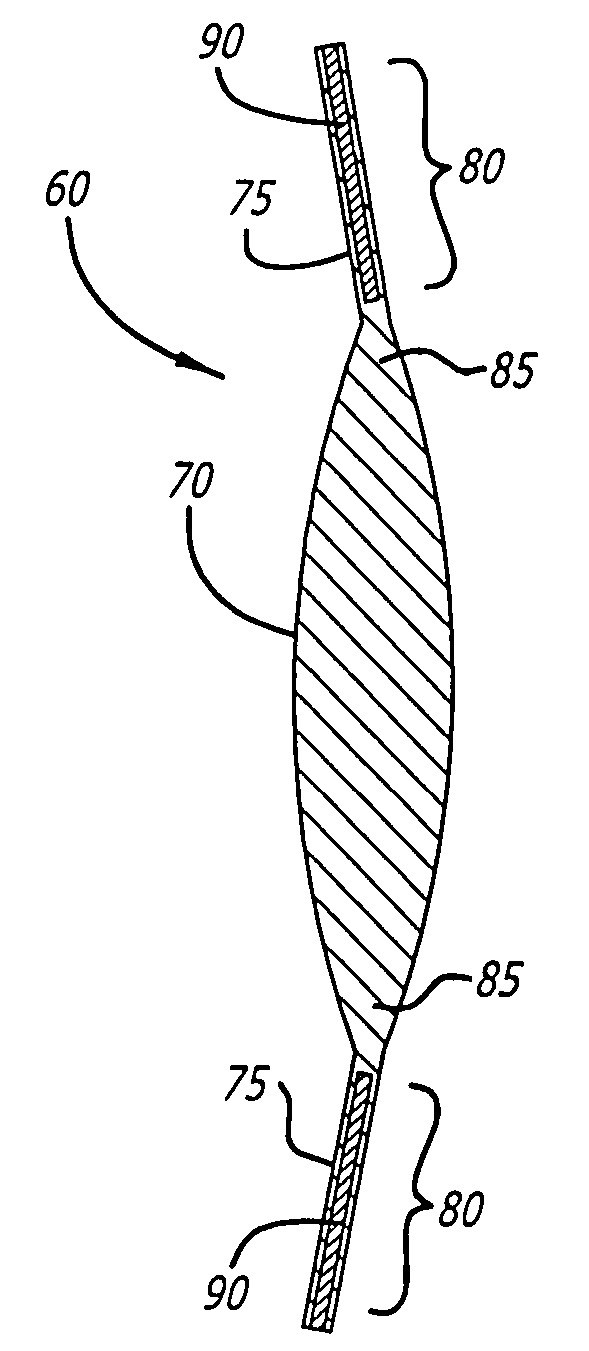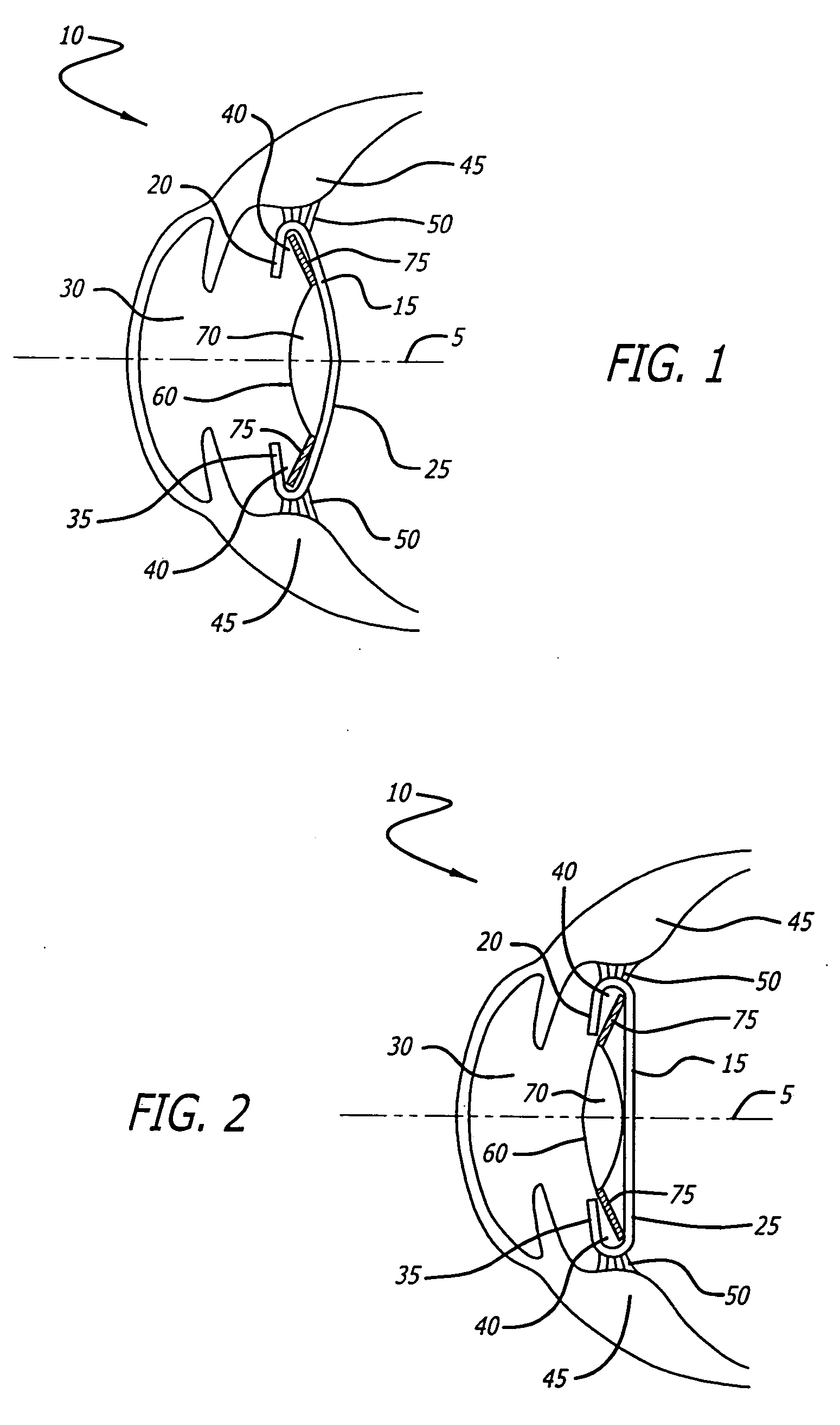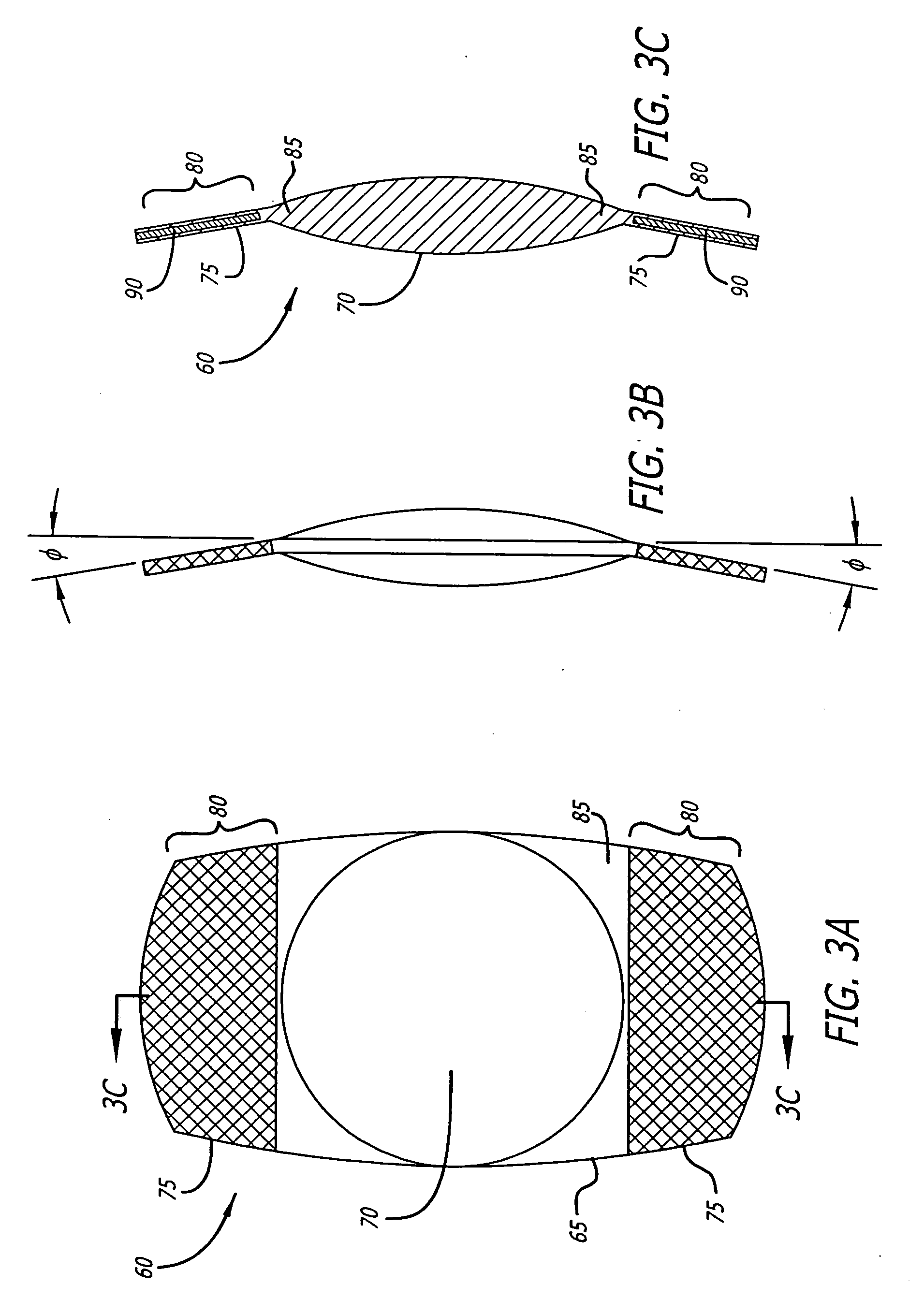Accommodating intraocular lens with textured haptics
a technology of haptics and intraocular lenses, applied in intraocular lenses, medical science, prosthesis, etc., can solve the problems of obstructing the amount of light passing through the crystalline lens and ultimately onto the retina, affecting and unable to provide both near and distance vision. the effect of improving the design of the accommodating intraocular lens
- Summary
- Abstract
- Description
- Claims
- Application Information
AI Technical Summary
Benefits of technology
Problems solved by technology
Method used
Image
Examples
Embodiment Construction
[0040]FIG. 1 depicts a human eye 10 from which the natural crystalline lens matrix was previously removed by a surgical procedure involving an anterior capsulotomy 30 in the anterior wall 20 of the capsular bag. The natural lens comprises a lens capsule, also called the capsular bag, have elastic anterior and posterior walls 20, 25 respectively, which are referred by ophthalmologists and herein as anterior and posterior capsules, respectively. Within the capsular bag 15 is a normally optically clear crystalline lens matrix (not shown). In many individuals this lens matrix becomes cloudy with advancing age and forms what is called a cataract, which may seriously obstruct light passing through the lens onto the retina so that a person with such a cataractous lens suffers a reduction in their visual acuity. It is now common practice to restore a cataract patient's vision by removing the cataract from the natural lens and replacing the cataractous lens matrix with an artificial intraocu...
PUM
 Login to View More
Login to View More Abstract
Description
Claims
Application Information
 Login to View More
Login to View More - R&D
- Intellectual Property
- Life Sciences
- Materials
- Tech Scout
- Unparalleled Data Quality
- Higher Quality Content
- 60% Fewer Hallucinations
Browse by: Latest US Patents, China's latest patents, Technical Efficacy Thesaurus, Application Domain, Technology Topic, Popular Technical Reports.
© 2025 PatSnap. All rights reserved.Legal|Privacy policy|Modern Slavery Act Transparency Statement|Sitemap|About US| Contact US: help@patsnap.com



